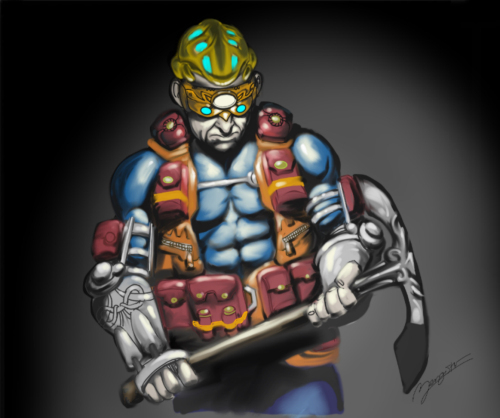Think you know dwarfs? Think again…
Many of us will be familiar with the appearance and nature of dwarfs from fantasy books and movies, but so much of what we know is pretty far removed from their original roles in mythology…
Dvergr is the Old Norse word for dwarf, Dvergar is plural. Like elves, dwarfs originate from Germanic mythology, though the modern perception of them is quite unlike how they were thought of prior to the Christianization of Northern Europe. The Anglo-Saxons used the word dweorg to denote a supernatural being which lived in the ground and may have been associated with smiths or illness. Old Norse mythology provides significantly more information on dwarfs, though much of it is the subject of debate.
The race features heavily throughout folklore and the legendary sagas, and their roles and abilities are varied. For example, some tales say that they are wise and molded men from the earth so that the gods could give them life, or even have them holding the sky aloft, while others call them fiendish murderers and treasure hoarders or liken them to maggots. What most seem to agree on, however, is that dwarfs are master craftsmen of weapons, armor and other fine items. They are often described as bearded and will turn to stone if exposed to sunlight. Their home is Niðavellir (“Dark Dwelling” or “Dark Fields”), one of the Nine Worlds of Norse cosmology, said at times to be a dry and mountainous landscape with sandy plains, and the halls and strongholds of the dwarfs are subterranean.
An interesting factor in this area of mythology is that there is little evidence prior to the Christianization of Europe to suggest that dwarfs were described as short and ugly with big heads. The oldest historical source in which much of the details appear (the Poetic Edda) makes no mention of their unusual stature and even gives them names such as “Tall Enough” (Fullangr) and “High” (Hár), while 12th century carvings depict men and dwarfs as equal in height. In the later Prose Edda, the existence of Dökkálfar (Dark Elves) is established for the first time, and they are said to live underground in Svartálfheimr (Home of the Black Elves). It has long been argued among scholars that the Dökkálfar andSvartálfar share very similar traits to dwarfs, and thus may be interchangeable names for the same race.
In Axtelera Ray:
The Dvergar of Nidavellir are a race of miners and master craftsmen who are by nature curt and reclusive, but far less isolated and unwelcoming than the days of old. Their subterranean cities cut from the cavernous rock are gleaming with gold and other precious metals, and the fiery forges deep beneath the mountains never stop. Sensitive to natural light, they mostly live below ground, though some small communities can be found in the shaded areas around Yggdrasil. Dvergar generally boast muscular physiques, with black hair, piercing blue eyes that glow to help them see in the dark, and skin so pale it is almost transparent, They also age slower than most other races. Though their political agendas are regularly accused of benefitting Nidavellir rather than Yggdrasil as a whole, their wisdom is unquestionable, and their counsel is often heeded. Lord Ivalnir is their highest ranking official, and his council meets at Sindristad, the capital city of Nidavellir.
Artwork by
Learn more cool history and mythology trivia at our encyclopedia.
The post Think you know dwarfs? Think again… appeared first on Axtelera-Ray.




